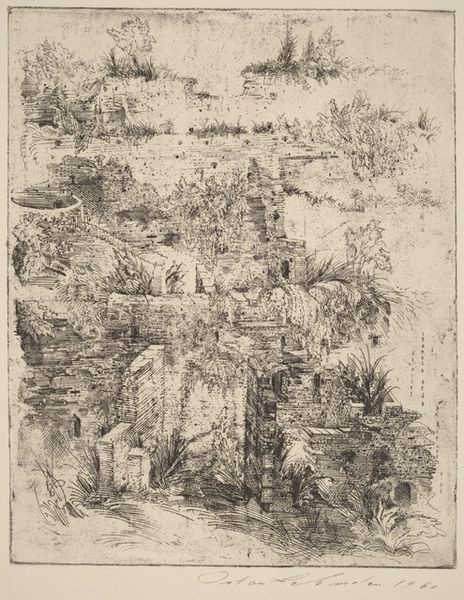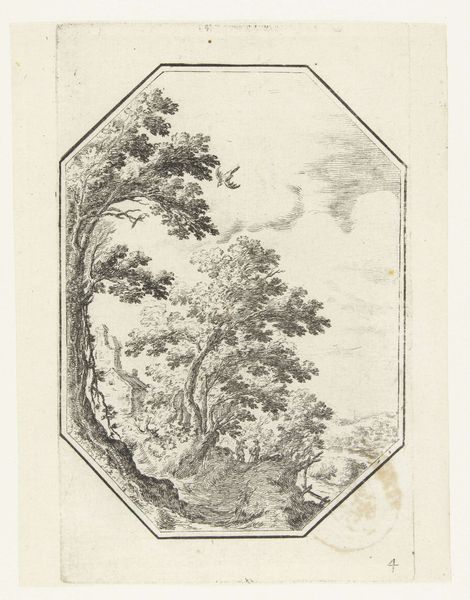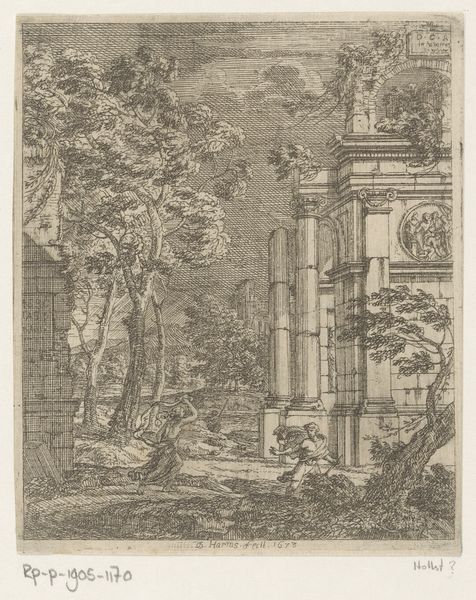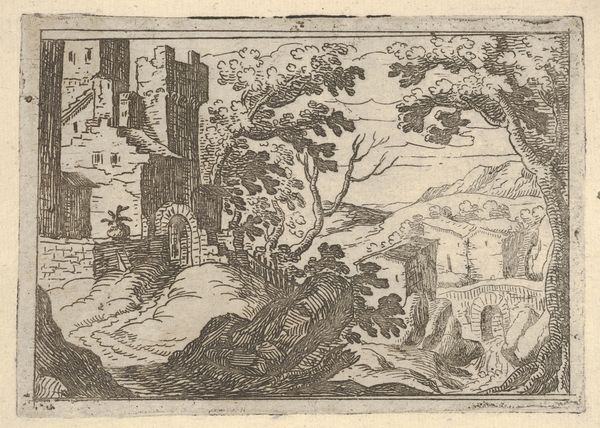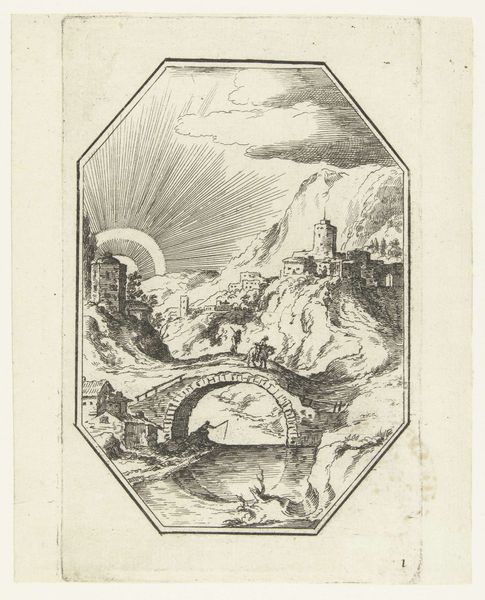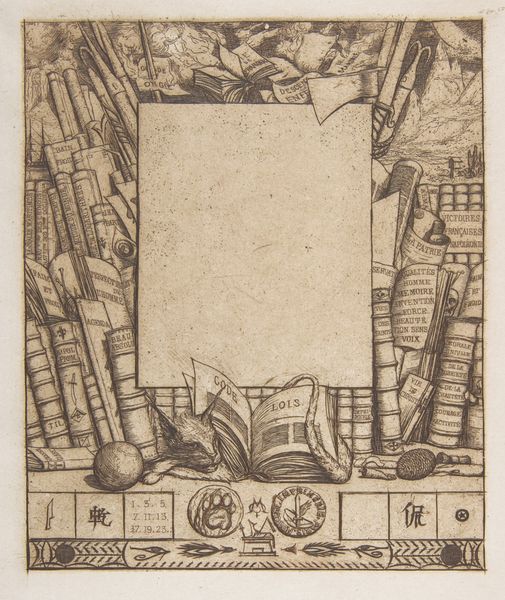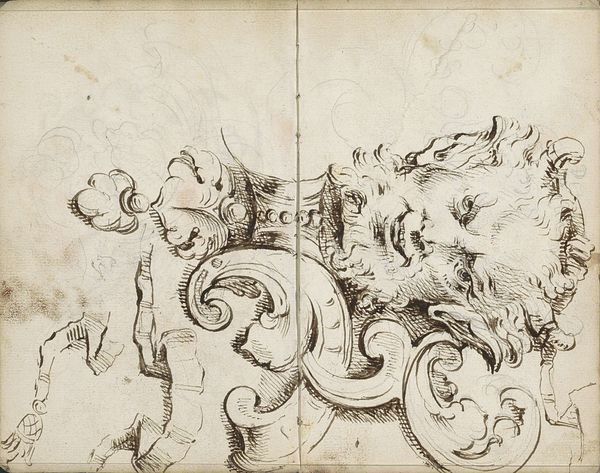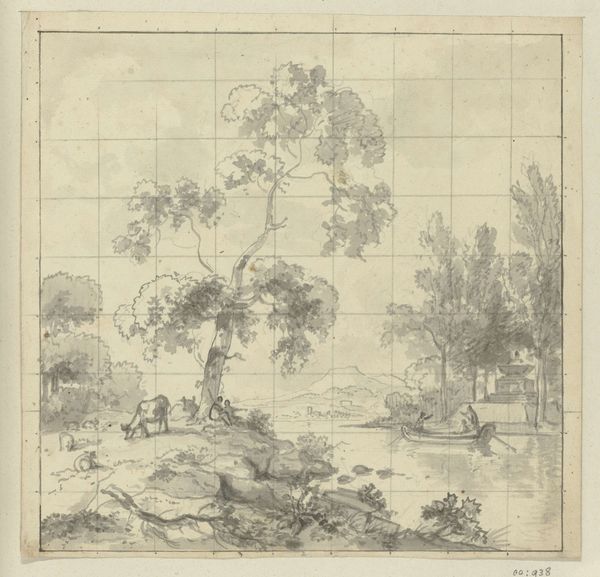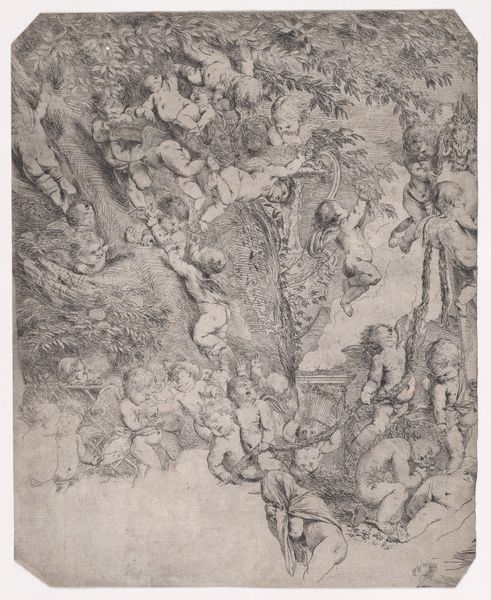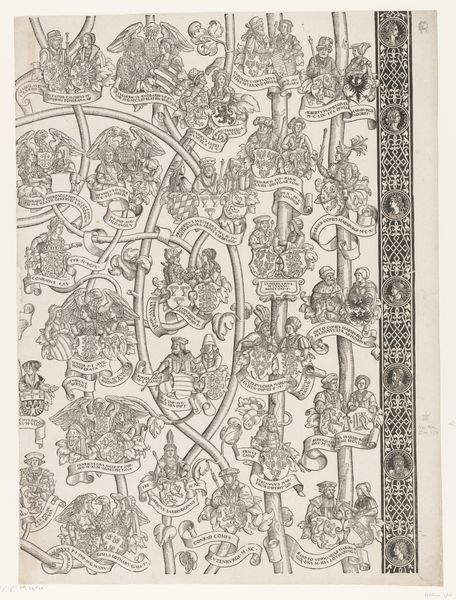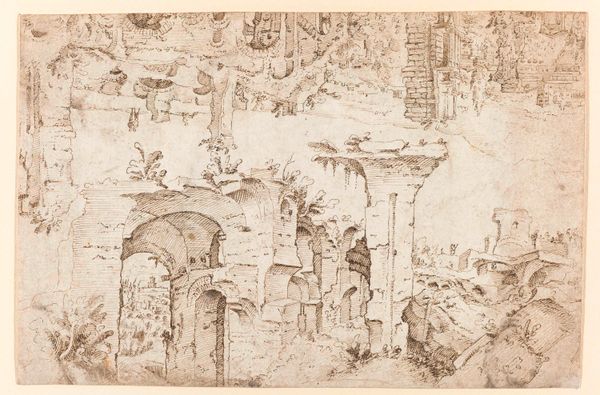
Dimensions: height 98 mm, width 70 mm
Copyright: Rijks Museum: Open Domain
Editor: So, here we have Johannes de Bosch's "Gedenkplaat in een afgebrokkelde muur," a pen and ink drawing from 1778. It has this really melancholic feel, almost like a ruin in a graveyard. The stark geometric shapes of the monument contrast with the wild, overgrown vegetation around it. What stands out to you when you look at this work? Curator: Well, what immediately strikes me is the tension between the cultivated and the untamed, something so resonant within 18th-century Europe where societal order and natural law became points of fierce debate. The crumbling monument overlaid with foliage, presented in grayscale, whispers a story of time's passage but it invites us to consider the powers that erect and erase cultural memory. Do you see a potential critique of established authority? Editor: I see that now. The monument feels like it's being swallowed by nature, suggesting that even the most powerful structures are eventually reclaimed. Could the ruin be a statement about the fleeting nature of power? Curator: Precisely! Think about the era this piece comes from. The late 18th century was a hotbed of revolutionary thought, and the questioning of established hierarchies and social structures. The encroaching wilderness could then symbolise the forces of change, challenging the supposed permanence of societal institutions and inherited power. What effect does this reading have on your original emotional impression? Editor: It gives the melancholy a new edge. It's not just about sadness for what's lost, but also perhaps a sense of hope for what might grow in its place. So, it's more revolutionary than mournful. Curator: Yes! It becomes a powerful visual metaphor for societal transformation and, more specifically, a call for the creation of a better world out of what remains of the past. Editor: That completely reframes how I see it. It’s incredible how much historical context can influence your interpretation. Curator: Indeed. This drawing shows that even seemingly simple images can speak volumes when we consider their socio-political underpinnings.
Comments
No comments
Be the first to comment and join the conversation on the ultimate creative platform.
